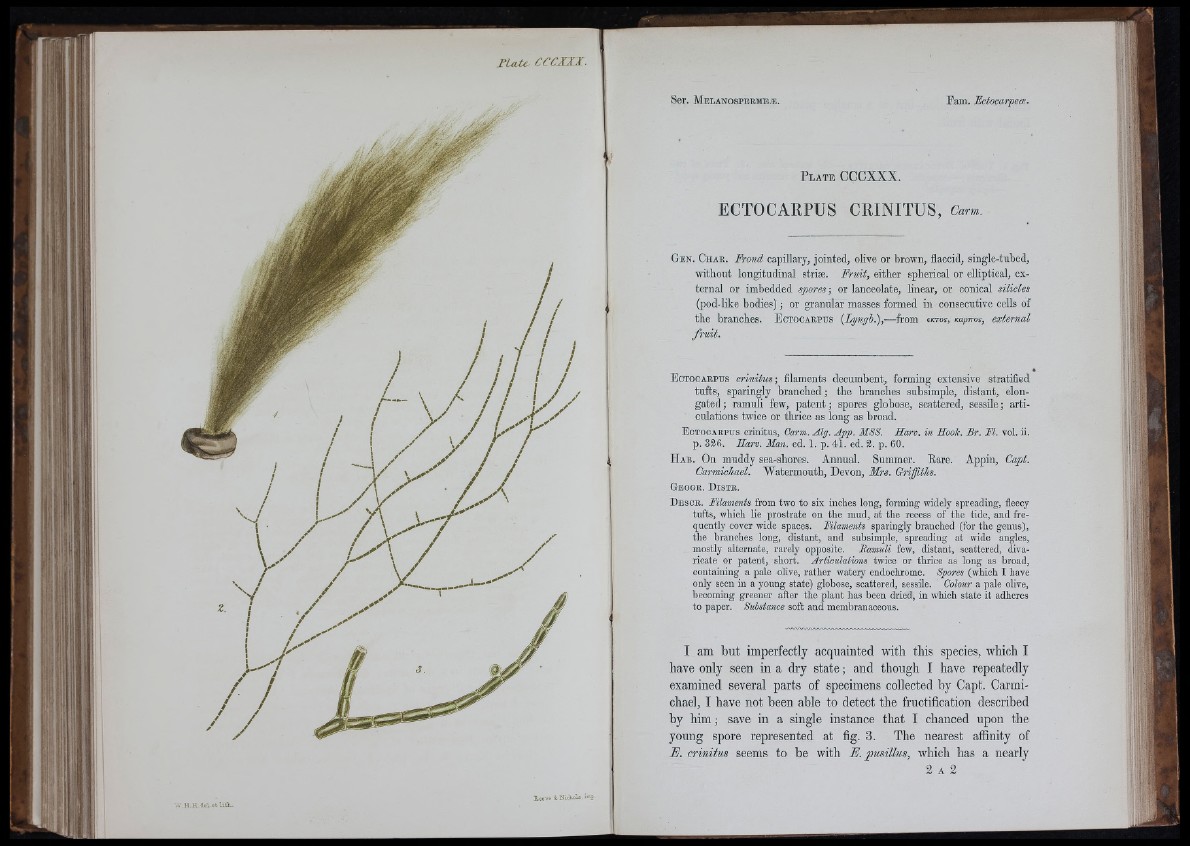
: 1(1 if!
Ser. M elanospermeæ.
P l a t e CCCXXX.
ECTOCARPUS CRINITUS, Carm
G e n . Ch a r . Frond capillary, jointed, olive or brown, flaccid, single-tubed,
without longitudinal striæ. Fruit, either spherical or eUiptical, external
or imbedded spores ; or lanceolate, linear, or conical silk ie s
(pod-like bodies) ; or granular masses formed in consecutive cells of
the branches. E ctocarpus { ly n g b ) ,—from tsros, Kapms, external
fr u i t .
E ctocarpus crinitus; filaments decumbent, forming extensive stratified
tufts, sparingly branched ; the branches subsimple, distant, elongated
; ramuii few, patent ; spores globose, scattered, sessile ; a rticulations
twice or thrice as long as broad.
E ctocarpus crinitus, Oarm, Alg. App. MSS. H a n . in Hook. Br. FI. vol. ii.
p. 336. H a n . Man. ed. 1. p. 4 L ed. 3. p. 60.
H a b . On muddy sea-shores. Annual. Summer. Rare. Appin, Capt.
Carmichael. Watermouth, Devon, Mrs. Griffiths.
Geogb. D is t e .
D escr. Filaments from two to six inches long, forming widely spreading, fleecy
tufts, which lie prostrate on the mud, at the recess of the tide, and frequently
cover wide spaces. Filaments sparingly branched (for the genus),
the branches long, distant, and subsimple, spreading a t wide angles,
mostly alternate, rarely opposite. Bamuli few, distant, scattered, divaricate
or patent, short. Articulations twice or thi’ice as long as broad,
containing a pale olive, ra the r watery endochrome. Spores (wldch I have
only seen in a young state) globose, scattered, sessile. Colour a pale olive,
becoming greener after the plant has been dried, in wliich state it adheres
to paper. Substance soft and membranaceous.
I am but imperfectly acquainted witb tbis species, whicb I
have only seen in a dry state; and though I have repeatedly
examined several parts of specimens collected by Capt. Carmichael,
I have not been able to detect the fructification described
by him; save in a single instance that I chanced upon the
young spore represented at fig. 3. The nearest affinity of
E. crinitm seems to be with E. pusillus, which has a nearly
2 A 2
i f I'I
lit
A